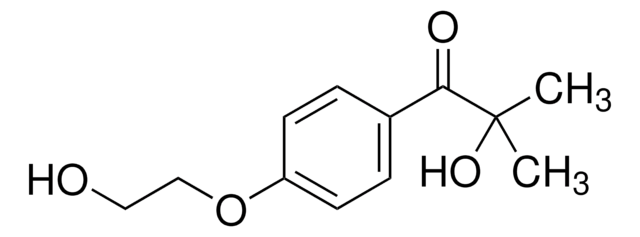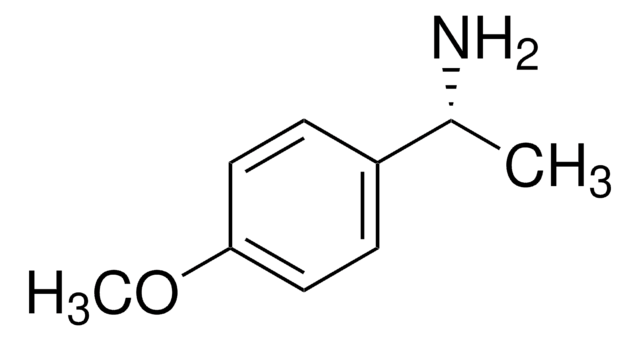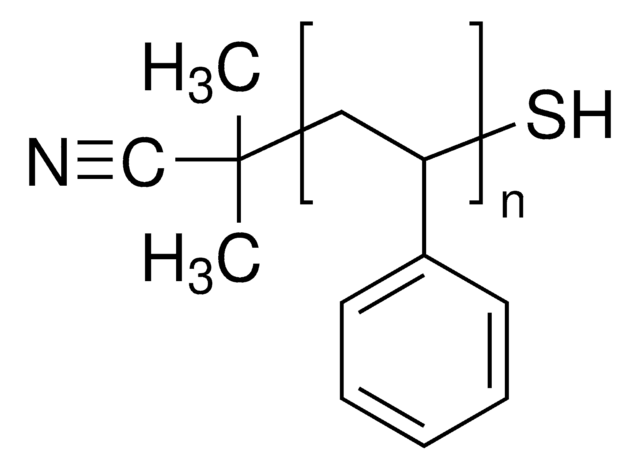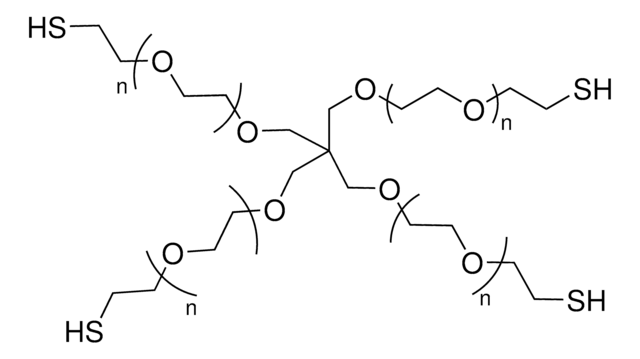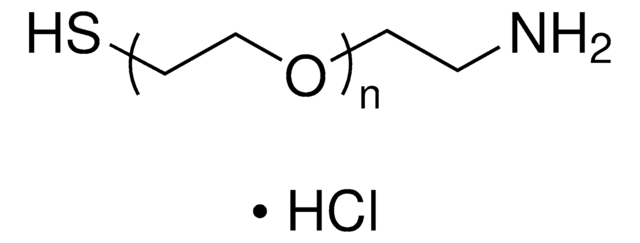729159
Poly(ethylene glycol) methyl ether thiol
average MN 6,000, chemical modification reagent thiol reactive, methoxy, thiol
Synonym(s):
Polyethylene glycol, Methoxy PEG thiol, Methoxypolyethylene glycol thiol, PEG thiol, mPEG thiol
About This Item
Recommended Products
Product Name
Poly(ethylene glycol) methyl ether thiol, average Mn 6,000
form
solid
mol wt
average Mn 6,000
reaction suitability
reagent type: chemical modification reagent
reactivity: thiol reactive
mp
56-61 °C
Mw/Mn
≤1.2
Ω-end
thiol
α-end
methoxy
polymer architecture
shape: linear
functionality: monofunctional
shipped in
dry ice
storage temp.
−20°C
Looking for similar products? Visit Product Comparison Guide
General description
Application
Signal Word
Warning
Hazard Statements
Precautionary Statements
Hazard Classifications
Eye Irrit. 2 - Skin Irrit. 2 - STOT SE 3
Target Organs
Respiratory system
Storage Class Code
11 - Combustible Solids
WGK
WGK 3
Flash Point(F)
Not applicable
Flash Point(C)
Not applicable
Choose from one of the most recent versions:
Already Own This Product?
Find documentation for the products that you have recently purchased in the Document Library.
Customers Also Viewed
Articles
Devising biomaterial scaffolds that are capable of recapitulating critical aspects of the complex extracellular nature of living tissues in a threedimensional (3D) fashion is a challenging requirement in the field of tissue engineering and regenerative medicine.
Our team of scientists has experience in all areas of research including Life Science, Material Science, Chemical Synthesis, Chromatography, Analytical and many others.
Contact Technical Service

